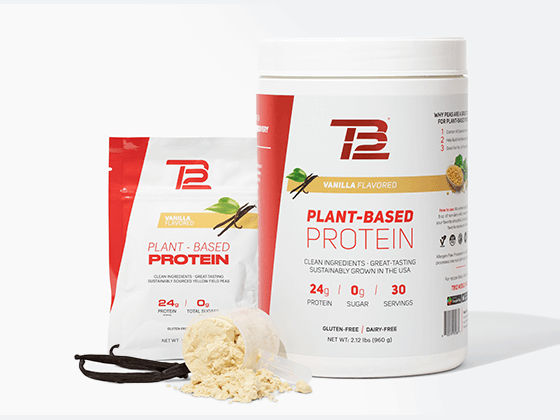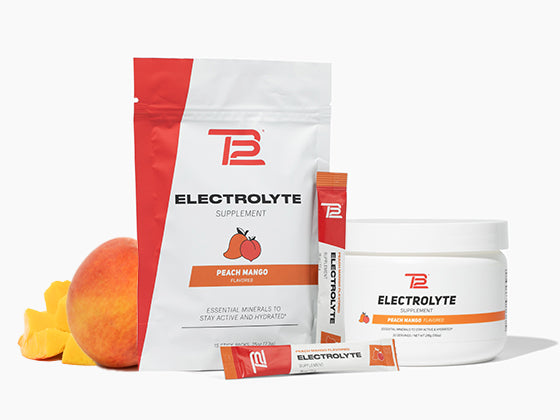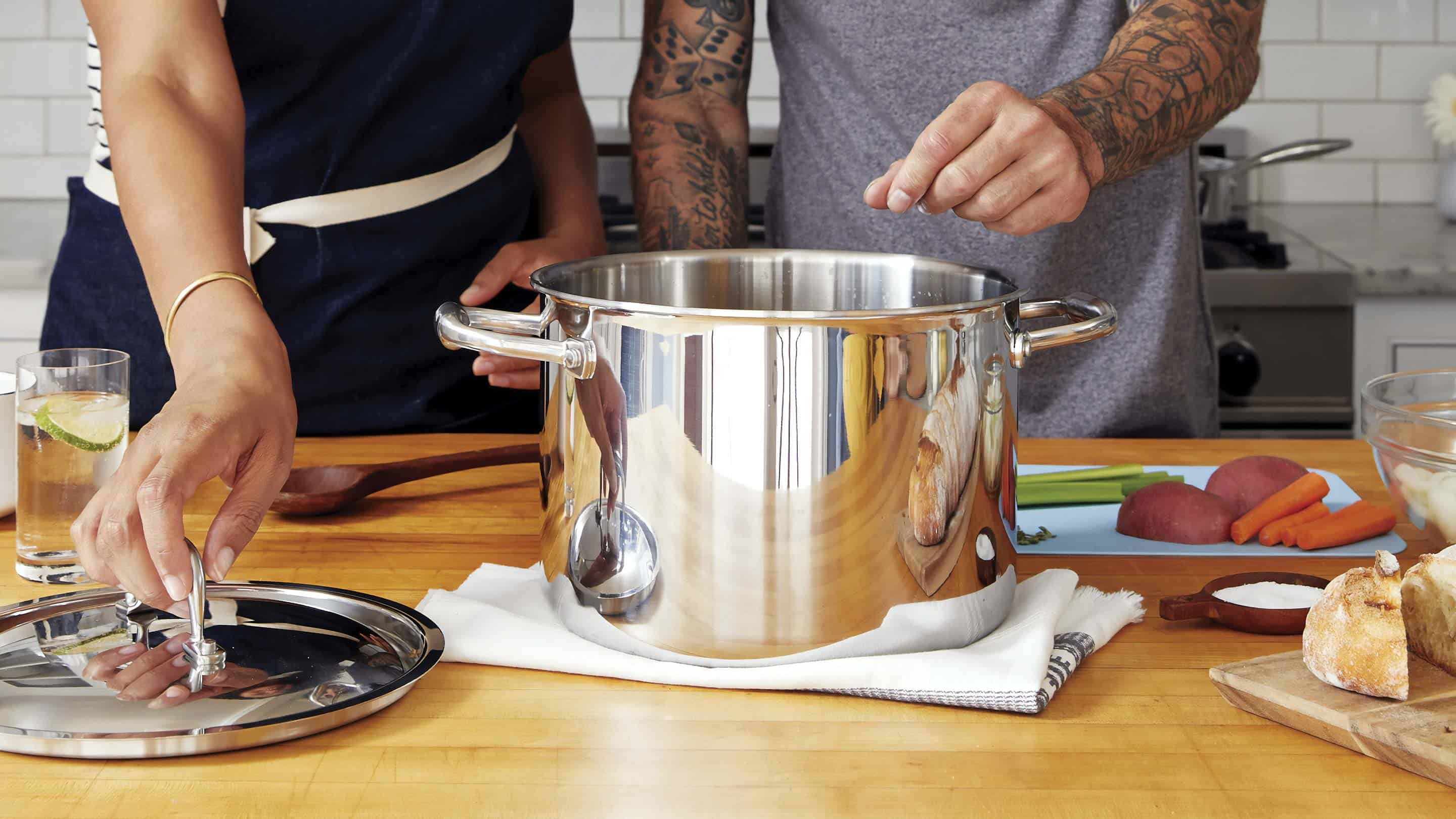Here at TB12, we always say that training and recovery are two halves of a whole and that you need to put as much effort into recovery as you put into training to fully maximize the impact of both. This is especially true of running!
It’s important to give your body everything it needs – both before and after your run – to perform its best and fully recover. Even a seemingly simple 2-3 mile run takes it’s toll, so we’ve put together some of our favorite tips to help you feel your best after you crush a run!

01 Accelerate Your Post-Run Recovery by Starting with Pliability
Starting your run with a self-pliability session using a TB12 Roller or Sphere is the best way to warm up your muscles. Working the soft tissues of your legs with a roller increases blood flow and oxygenation, which allow your muscles to work more efficiently throughout your actual training. This means less lactic acid buildup and less tissue damage — an acceleration to total recovery.
02 Ease out of Your Training with a Solid Cool-Down
To get your body safely into a relaxed post-exercise state, it’s not enough to just stop moving. You need to devote 10 to 20 minutes after the intense part of your training to a lighter form of movement. This light activity is called a “cool-down” because it gradually lowers your core temperature, but it does more than that:
- A cool-down prevents blood from pooling in your legs, which can cause dizziness or fainting.
- It helps to remove waste products (like lactic acid) that build up in your legs during exercise.
- It gradually lowers your heart rate and breathing rate back to resting levels.
03 After Your Cool-Down, Replenish Lost Water and Electrolytes
Any time you sweat, your body loses water and electrolytes. Dehydration and hyponatremia (low sodium) aren’t just uncomfortable — they’re dangerous, too. To avoid these conditions and enable a smooth, quick recovery, it’s important to replenish water and (at least) sodium after all of your workouts. At the bare minimum, sprinkle some table salt into a glass of water. Although other electrolytes like potassium, calcium, magnesium, and chloride are not lost in sweat during exercise, they are essential to your body’s daily functioning. Abnormally low levels of some key electrolytes can cause discomfort, a drop in performance, or even something serious like paralysis. To ensure that your body has an optimal amount of all the minerals it needs, add a squirt of TB12 Electrolytes to your water bottle.
In addition to TB12 Electrolytes, you can also find a surprising amount of electrolytes in the food you eat every day. Essential electrolytes are found in a wide variety of plant and animal food sources.
- Potassium is found in leafy greens and vegetables like spinach, parsley, lettuce, broccoli, peas, lima beans, tomatoes, and potatoes, especially the skins.
- Chloride tends to come hand in hand with sodium as salt, but it can also be found in tomatoes, lettuce, and olives.
- Magnesium can be found in leafy greens, figs, nuts, avocados, bananas, raspberries, peas, broccoli, cabbage, green beans, artichokes, asparagus, brussel sprouts, and several kinds of fish.
- Foods rich in calcium include broccoli, cabbage, okra, breads or grain products made with fortified flour, and any fish with edible bones (such as sardines).
04 Get a Good Night’s Sleep Every Night — Especially the Night After Your Run
Activity and sleep have a special relationship: if one gets better and more consistent, the other gets better and more consistent. In fact, getting exercise during the day strengthens your circadian rhythm, which makes your body’s internal sleep-wake signals stronger and easier to follow. In other words, you’ll sleep better if you work out — and not just because you’re exhausted.
This is good news because a good night’s sleep also happens to be important to your post-run recovery. Studies of football players show that one night of no sleep impairs jump height and reaction time the next day. Among swimmers, poor sleep decreased exercise capacity and increased feelings of fatigue. Since most of your body’s protein is synthesized while you sleep, it makes sense that losing sleep would have this effect.
Aim for 7 to 8 hours of uninterrupted sleep every night, and try to wake up at the same time every morning. Remove sources of stress (work papers, to-do lists, or computers) and blue light (your smartphone) from your bedroom to minimize disruptions to your circadian rhythm.
05 In the Weeks Leading up to Training, Keep Your Immune System Strong
Exercise temporarily suppresses the immune system for 3 to 72 hours. And nothing derails your training schedule more than the cold or the flu. Although the “intuitive” thing to do would be to take a vitamin C supplement, there’s no clear evidence that that works (for athletes or for the general population). In fact, evidence shows that the best way to combat the natural dip in immune function after a hard run is actually to do these three things:
- Replenish carbohydrates during exercise (30 – 60 grams per hour).
- Supplement with probiotics (daily) and vitamin D3 (1000 IU daily from fall to spring).
- Follow Tom’s example and eat a lot of fruits and vegetables every day (which contain antioxidants).
Avoiding illness after a run, it turns out, has more to do with your lifestyle in the weeks leading up to exercise than what you do in the hours after one run. Think of healthy eating as pre-hab for your immune system.
06 Supplement Your Protein for a Speedier Recovery
When it comes to protein, there’s no question that athletes benefit from a protein supplement. Added protein boosts muscle gains and prevents muscle loss — so it’s important for strength, power, and endurance athletes alike.
Research is less clear on the “ideal” protein. Evidence so far points to casein- and whey-based protein supplements as the “best” proteins for building and repairing muscle. However, with the right combination of sources, it’s possible to get all the protein your body needs from plants. Plant-based protein sources (like TB12 Plant-Based Protein, which is made from pea protein) tend to be lower in saturated fat, lower in calories, and higher in phytonutrients than protein from animal sources(e.g., whey, casein, eggs, or a piece of meat).

07 Roll out Your Muscles After Your Workout to Reduce Soreness and Preserve Performance
Evidence shows that rolling out your muscles after your workout can decrease soreness and enhance post-run recovery. It does this by making direct changes to your muscle structure.
For example, using a TB12 Roller or Sphere can alleviate symptoms of delayed onset muscle soreness (DOMS). In the study, test subjects felt less tenderness in their quads after 20 minutes of rolling (plus once a day every day afterwards). And usually, athletes with DOMS perform worse if they try to do the same intense exercises two days in a row. With rolling, their performance dropped significantly less.
Learn more about the difference between flexibility, mobility, pliability
08 Take One or Two Complete Rest Days Every 7 to 10 Days
A complete rest day is different from a recovery day. A recovery day might mean a slow run at half your typical effort level, but a complete rest day is a day when you don’t run at all. Since running at any intensity puts stress on your bones and joints, these complete rest days are important.
09 In General, Listen to Your Body to Avoid Overdoing It
At TB12, we look at training in a holistic way, which means we focus on the big picture. One way you can keep the big picture in mind in your training is to adapt your training schedule to your life — not the other way around.
For example, say you’ve planned out a whole week of workouts. You’re going to do a three-mile run on Monday, Wednesday, and Friday and then go to the rock gym Thursday and Saturday. For some reason, though, your Wednesday run hits you harder than it usually does. You feel sluggish, foggy, and just tired in general. Come Thursday evening, you’re not feeling up for your usual climb, and you have to make a choice.
Option 1 is sticking to your workout schedule, going for a climb, and just crossing your fingers in the hopes that you “get over” the feelings of fatigue — somehow. Option 2 is to revise your workout plan, opt for something less intense (like a walk), and give your body a chance to recover from whatever is making it slow down.
With a big-picture approach to fitness, the best option is option 2. Instead of showing fierce loyalty to your well-thought-out workout schedule, show fierce loyalty to yourself — and be flexible.
Equipment Required:
TB12 Vibrating Pliability Roller
Warm-up. Cool down. Relieve tension. Improve recovery. Avoid Pain.
Our Vibrating Pliability Roller merges muscle-stimulating vibration therapy with a professional-grade foam exterior, with a range of contours to target specific muscles for an efficient, full-body foam rolling routine. With a wide, grooved surface area, this roller makes it easier than ever to roll out large muscle groups and reap the benefits of self-pliability work.
The Vibrating Pliability Roller relies on four vibrational frequencies to help develop positive brain-to-muscle neural pathways, improving muscle pliability and recovery. The contoured foam exterior makes it easy to apply additional pressure and work muscles deeply while keeping the Vibrating Pliability Roller in place.
Hydration is critical to achieving pliable muscles. Drinking enough water can be tough.
At TB12, we recommend consuming half your body weight in fluid ounces of water each day. Most sports drinks are loaded with sugar, our Electrolytes have just 1 gram of sugar per serving (a simple carb, for energy) and are loaded with essential minerals like sodium, magnesium, and potassium that your body loses through sweat. Our light, refreshing flavors in convenient single-serving stick packs make it easier than ever to replenish and hydrate on the go.
We lose many of our body’s natural minerals throughout the day, so it’s essential to replenish them. TB12 Electrolytes contain 72 trace minerals sourced naturally from the Great Salt Lake. These elements amplify hydration by helping you fully absorb the water you drink, especially when you’re working out. Electrolytes support everything from muscle function to regulating fluid balance to immune function and cell growth.
It's no-brainer hydration.
We keep it simple, clean, and sustainable.
As a single-source Protein free of major allergens, TB12 Plant-Based Protein Powder is easy to digest and even easier on your stomach. The formula makes it easy for your body to absorb the full spectrum of essential amino acids in organic yellow field peas.
We recommend consuming protein every 4 to 6 hours throughout the day to maximize your body’s ability to gain and maintain lean muscle mass.
Simply shake one level scoop of our TB12 Plant-Based Protein Powder into 8 fluid ounces of water or non-dairy milk.









